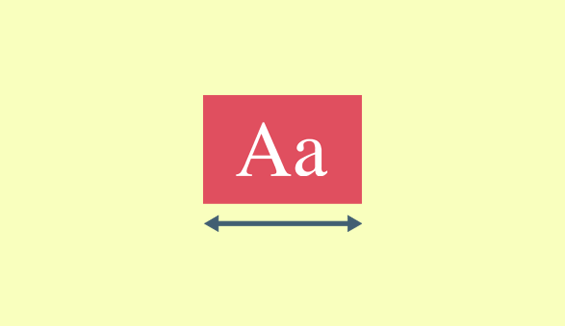It is quite a challenge to improve designs with paired fonts. It is an art that builds beautiful pages, defines the brand and tone to enhance the readability.
Check out these tips while picking up your fonts effectively
1. Pick corresponding textual styles

Numerous textual styles have particular moods or identities — casual, playful, serious, elegant. You need to ensure the moods of your textual style decisions coordinate the reason for your design. For example, a kids’ photo with round face will be apt for birthday party invitation, but it will not be suitable for a business meeting invitation.
As is regularly the case with individuals, opposite poles have a tendency to draw in: “extroverted” and “introverted” textual styles adjust each other pleasantly when consolidated. The bigger textual style has a considerable measure of identity, with a breathtaking, hand-painted look.
Choosing whether at least two textual styles supplement each other can have a craving for something of a speculating diversion. You’ll frequently end up depending on intuition, a gut feeling. Furthermore, that is alright. If you try seeing how textual styles join well— on sites, in magazines, product packaging, store signs — you’ll begin to build up an eye for what works and what doesn’t.
2. Consider context is important
The text ought to be effortlessly readable at the size it will be shown, and particularly important is its clarity. All caps small letters with spaced generously will be a better choice to improve legibility.
Besides size, text style additionally influences readability. A decent beginning stage for picking text styles that fit the setting of your plan is to coordinate the characteristics of your expected message with the apparent attributes of a typeface.
Some portion of the procedure will choose whether show typefaces or more impartial text styles (or some blend of the two) are most proper for your venture. Once in a while you’ll need something that truly pops, and different circumstances the setting will require a textual style that is not diverting, for example, for long sections of content.
Context can likewise be drawn nearer as far as historical periods and genres. Doing a little research into the foundations of the textual styles you’re thinking about — when and how they were made and for what reason, or even how they’ve been utilized as a part of a historical context — may help decide whether they’re a good decision for your plan. For example, a book cover design for a life story about Abraham Lincoln may include a stately serif text style that was being used amid the American Civil War period.
3. Build up a visual progression
Conventional groups of publishing like daily news papers and magazines offer great cases of how to apply a visual pecking order to text styles. They join text styles in way that outwardly isolates distinctive printed components like headlines, sub-features and captions. Qualities, for example, boldness, spacing and size add to how the eye ought to explore the page and what content ought to draw in consideration first.
A chain of importance can be built up for a design, not only designs with body copy and titles. When you’re picking textual styles for a venture, simply consider what part you need watchers to take a gander at first. Or, then again here’s another method for moving toward it: Decide what data is inevitable — what must emerge at first look (an organization name, a feature, an uncommon offer?) — and what is less vital. At that point, make your text style, size, and plan decisions appropriately.
4. Contrasting styles

One of the principle reasons that blending serif and sans-serif text styles works so well is that it makes contrasting styles. This thought of difference unites numerous ideas that you ought to consider, including chain of importance and how textual styles supplement each other.
Also Read: 9 top psychology tips behind using colors in website design
Contrasting can be accomplished in various courses, including through style, weight, size, spacing, and color, among others. For example, if a striking, thick textual style is combined with a tall, thin one, they’re practically direct inverses, they work pleasantly together in huge part since they are so extraordinary. The distinctions help make particular parts for every text style, enabling them to emerge as individual snippets of information.
5. Serif and sans serif combination
Running short on time and need to pick two text styles? Attempt one serif and one sans serif. The two tend to cooperate well, especially at differentiating sizes.
It’s important here that, in the realm of typography, there’s a continuous level headed discussion about whether serif or sans-serif text styles are best as far as clarity. For a lot of content, serif text styles are for the most part thought to move the eye along more viably and increment perusing speed, particularly in print. Then again, sans-serif textual styles are regularly supported for on the web/on-screen message due to their disentangled letterforms that show all the more obviously at different screen resolutions.
6. Similar fonts pairing won’t work
Picking textual styles that are excessively comparable (i.e., don’t have enough difference) winds up noticeably tricky. You’ll experience difficulty setting up a chain of importance, on the grounds that the textual styles aren’t outwardly recognizable from each other. Also, any distinctions that are perceptible may look more like a slip-up than a purposeful decision.
In any case, text styles don’t need to be precisely similar to be contrary. Typefaces that are to some degree distinctive yet have practically identical weights, proportions, and additionally letter shapes might be sufficiently comparable to make your design look not proper, particularly when utilized at a similar size Here’s a simple approach to test whether at least two text styles may be excessively comparable: Place them next to each other on your screen, then sit back a little and squint. In the event that the textual styles appear to be identical, then that is a good sign that your plan could profit by turning up the difference between your type decisions.
7. Need contrast but not conflict

When joining textual styles, you do need contrast, yet you don’t need struggle. Because textual styles are diverse doesn’t mean they will naturally function admirably together. As a rule, typefaces that share two or three qualities — perhaps they have similar proportions, or the lowercase letters have a similar tallness— will probably look symphonious together, regardless of the possibility that the general appearance varies.
8. Limit fonts: more attractive
You may have heard it said that you ought to keep textual styles for one tasks to just a few. That is a fitting general guideline in specific applications (and is regular in publication plans like magazine spreads), however it is in no way a compulsory rule.
A few tasks will call for more detailed textual style blends, for example, in case you’re duplicating a specific look, or when you require an especially improving stylish. In the event that you do utilize an assortment of textual styles, the general impact ought to be symphonious, not clashing or jumbled.
Anyhow, as with any design component, you can re-do with typeface determinations. Most ventures will profit by a more controlled, astute approach. A good approach to refine your decisions is to give every textual style a particular part or reason in the design. If you wind up utilizing a combination of textual styles, yet you can’t generally assign motives to your choices, then it might be high time to cut back.
9. Utilize textual styles from a similar family
Utilizing typefaces from a similar family is dependably an easy win; all things considered, they were made to cooperate. Search for families that accompanied a scope of choices (distinctive weights, styles, cases) to guarantee that you have enough variety for your motivations.
When matching text styles that originated from a similar family, you need to arrange deliberately to make differentiate, fluctuating things like text dimension, weight, (for example, light, normal, and intense), and case (upper, lower, little tops).
Families that accompanied additional elements like italics or amplified or consolidated adaptations offer considerably more space for getting innovative with your textual style courses of action.
One of the advantages of restricting your typefaces for a venture to one text style family is that it makes the plan procedure somewhat more streamlined. It can be tedious attempting to settle on the ideal text styles to consolidate, yet when you have a choice that is pre-determined; it takes a portion of the weight off and consequently helps you make a stronger look.
10. Practice makes everything perfect

Practice consolidating text styles all alone, when there’s not cash or your organizations’ decision riding on the venture. Similarly as with any aptitude, getting to be noticeably skillful includes a considerable measure of experimentation. What’s more, as with most imaginative attempts, the craft of blending textual styles is frequently a goal one. There’s no idiot proof recipe for finding the ideal textual style blend.
So take challenges. Try. Utilize your instinct. In some cases you’ll simply have an inclination that something works, regardless of the possibility that it in fact shouldn’t, as indicated by the “rules.” Other circumstances, you’ll simply realize that a textual style matching isn’t working; attempt to make sense of why and get informed from it. Take these typography fundamentals as a beginning stage, and if they work well for you, utilize them — if not, don’t give them a chance to smother your innovativeness.
Acodez IT Solutions is a web design and web development company in India offering all kinds of web design solutions ranging from carousel sites to the ultra modern sites that only a few of the multi giants have got. We are also a SEO agency based in India offering all kinds of SEO and inbound marketing solutions to our clients. For more details, you can visit our website or contact us.
Looking for a good team
for your next project?
Contact us and we'll give you a preliminary free consultation
on the web & mobile strategy that'd suit your needs best.










Few people think about the font while developing a website, though its a very important part considering the visitors point of view.
Very Helping article. Thanks!